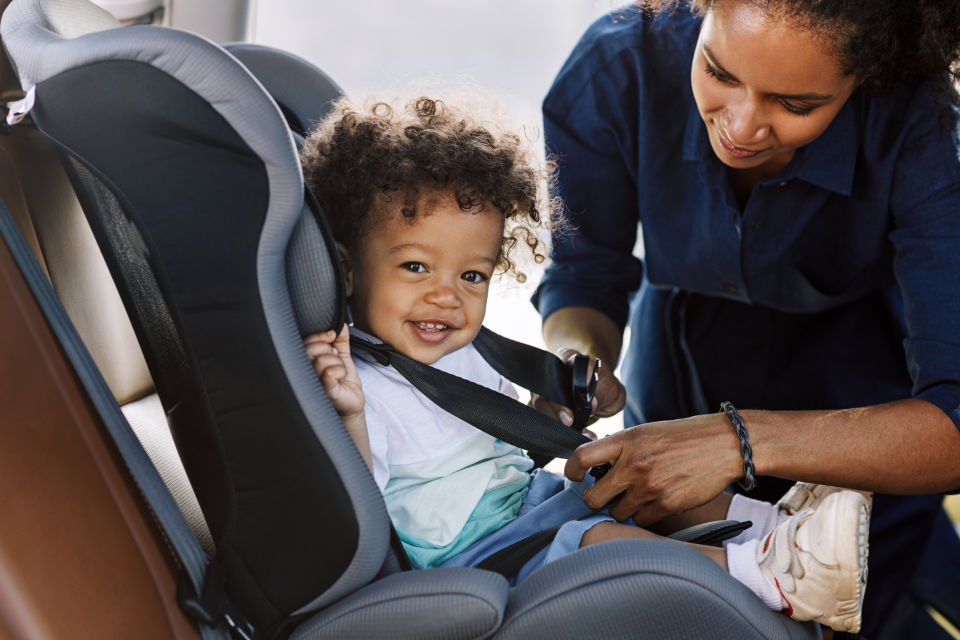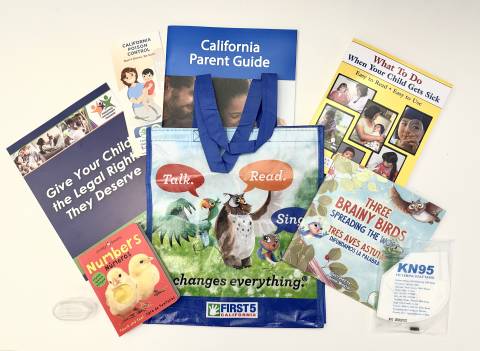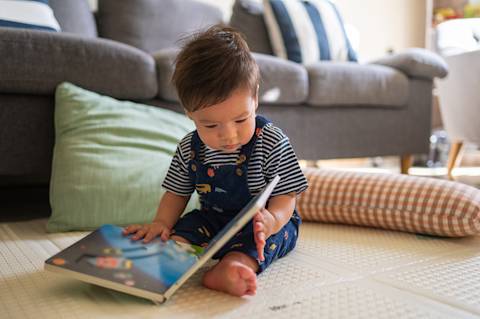As we enter into the holiday season, many families plan to travel to visit loved ones. If you’re traveling with your child, here are some ways you can plan ahead for a safe trip.

Before you start your journey, there are a few ways you can plan ahead to set your family up for a fun and safe trip:
Pack toys your child can play with to keep them busy during the trip. If possible, bring a surprise toy or two. An exciting new toy to play with can keep children occupied for a while, giving you a chance to begin your travels without a tantrum.
Pack mess-free, nonperishable snacks, as well as water. Easy-to-eat whole grain cereals are a good travel option, as well as crackers, dried fruit, granola, and more.
Check out our list of fun word games you can play with your child while traveling.
If you or your child is showing symptoms of COVID-19, such as a fever, runny nose, sore throat, lack of taste or smell, vomiting, or diarrhea, it’s advised you get tested for COVID-19 before traveling. Read more about the symptoms of COVID-19 for babies and children.
Whether you’re planning a quick car ride or a longer road trip, the most important way to keep your child safe is to have an age-appropriate, well-fitting car seat. California state law requires that children under age 2 ride in a rear-facing car seat. The law also requires children to remain in a booster or car seat until they are 8 years old or 4 feet 9 inches tall. Studies show that using booster seats significantly reduces the risk of injury for children 4 to 8 years old compared with seat belt use alone. Read our previous article for more information.
If you or someone you know is in search of a free car seat, the California Office of Traffic Safety has a portal to connect you with organizations in your county that might offer free car seats. Many organizations like AAA, local fire stations, and more also offer free car seat fittings by appointment. Kid Travel provides more resources for free or discounted car seats, as well as where you can go to get your car seat fitted.
When you plan your route, allow time to stop and stretch your legs every two hours or so. Children can get restless in the car, and a quick 10-minute break at a rest stop can help them get their wiggles out. Many rest stops offer short trails or playgrounds. But remember: Even if you’re just making a quick trip, never leave your child alone in the car.
Before you go, it’s a good idea to consult with your pediatrician to make sure it’s safe for your child to travel. This is especially important if you’re traveling with a child who had an ear infection in the two weeks prior to your flight. The changes in air pressure during the flight can irritate ears recovering from infection. If you have an infant, you can encourage them to nurse or suck on a bottle to decrease ear pain during the flight.
If you’re traveling with a newborn, it’s advised that you check your airline’s policies on newborn travel. Minimum age requirements can range from 2 days old to 2 weeks old. The airline might also require that you have a doctor’s note clearing your newborn to travel. Newborns don’t need their own seat, so prepare for them to sit on your or your co-caregiver’s lap throughout the flight.
For children weighing between 22 and 44 pounds, the Federal Aviation Administration recommends using a CARES Child Safety Device. This type of device is an alternative to using a hard-backed seat and is approved only for use on aircraft. These seats cannot be used in cars or other vehicles. Some car seats are airline approved. You can look up your car seat model online to see if it can also be used on an airplane.






